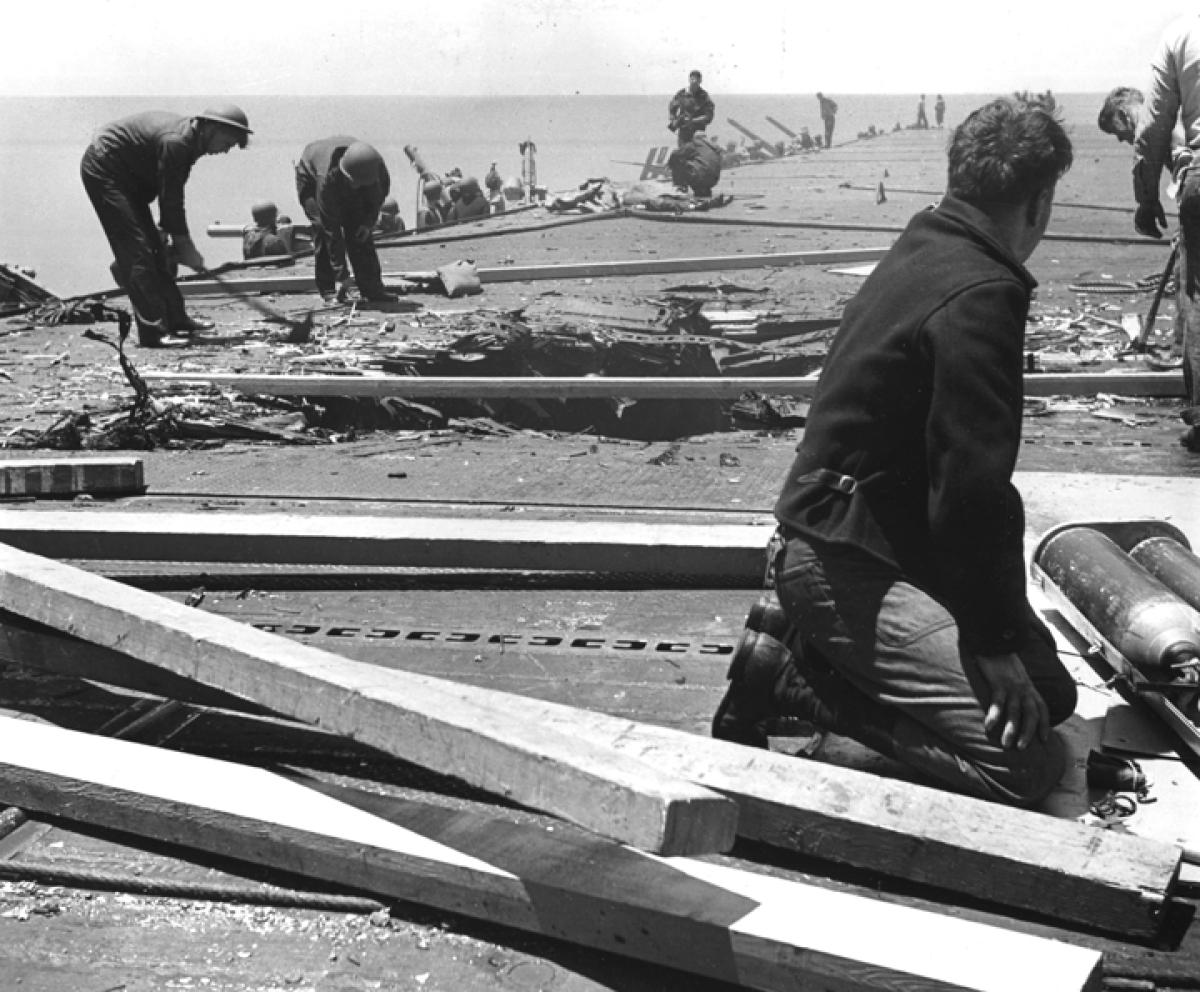On 4 June 1942 in the waters near Midway Atoll, three Japanese carriers—the Kaga, Akagi, and Soryu—were in flames and destined for the bottom of the sea. In a matter of minutes, the tide of the Pacific War had turned, as American naval aviators had cascaded from the skies and rained high explosives onto the same flight decks that had just seven months before launched the devastating attack on Pearl Harbor. But great victories often come at a high price, and Midway was no exception.
The Hiryu, a fourth Japanese carrier, also destined for the bottom but not yet under attack, launched her own strike that found its way to the USS Yorktown (CV-5). The Japanese planes swarmed over the American carrier with great ferocity.
Leading Seaman George Weise’s battle station was a .50-caliber machine gun near the Yorktown’s stack. As Japanese aircraft swooped low over his ship, Weise swiveled his weapon about as quickly as he could, firing bursts at the attackers, his shoulders shaking violently as the large-caliber rounds exploded from the barrels in search of the fast-moving targets.
But the skilled Japanese aviators pressed their attack, undeterred by the defensive efforts of Weise and the many other American gunners who were likewise throwing lead skyward. Before long, one Japanese bomb struck the Yorktown and then another. The blast from the second bomb slammed Weise’s head against the gun sight of his weapon, fracturing his skull, and then tossed him into the air. He dropped to the flight deck like a rag doll, his right side paralyzed.
Sometime later, Weise lay in sick bay under eerie blue battle lights, still unable to move the right side of his body, and vaguely aware of the horn signaling “abandon ship.” In the relative stillness that followed, when all Weise heard was the sound of grinding metal and the rush of rising water, he thought he heard a weak voice calling his name. It was Seaman Second Class Norman Pichette, who lay suffering from terrible abdominal wounds.
The two men discussed their plight. It was apparent that they had been left behind, and neither relished the idea of going down with the crippled ship. Somehow finding a reserve of determined strength, Pichette sat up, removed the IV tube that had been providing him much-needed pain killers, wrapped a sheet around his mangled midsection, and with great effort left the sick bay.
The destroyer Hughes (DD-410) had been circling the stricken Yorktown for some time when a sailor who was on deck taking a break from his radar watch noticed little spouts of water leaping out of the sea near the carrier. A lookout dismissed the miniature geysers as flying fish striking the water. But on the destroyer’s next pass around the carrier, when the little spouts again erupted from the surface near the same spot, the radarman concluded that these were not flying fish but machine-gun rounds striking the water. He then brought it to the attention of the officer of the deck, and soon the gig was lowered with a boarding party. Clambering aboard the heavily listing carrier, the boarding party found Seaman Pichette clinging to the machine gun he had been using to signal his presence. He was in obvious pain, and the sheet wrapped around his middle was crimson with blood.
Pichette told the boarding party about Weise, and soon they had rescued him and several others who also had been left behind. George Weise survived the war, but Norman Pichette succumbed to his wounds and was committed to the deep to lie alongside his ship that also succumbed.
Seaman Second Class Pichette was posthumously awarded the Navy Commendation Medal and Purple Heart.



